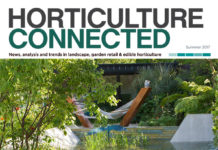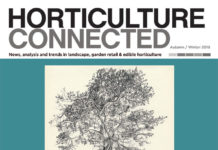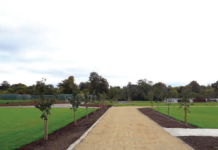Despite their immeasurable value to us and the planet we inhabit, the majority of professionals simply don’t understand the most basic things about trees. And it’s having disastrous consequences on our landscape. In the first of a series of features Terry O’Regan gets to the root of the problem
Does this simple question o end you? If you ever aspire to be a fiction writer you will learn the importance of the first line of a novel – you must draw in your reader. I am practicing. Do I have your attention or are you about to move on to the next page muttering, “He’s a right eejit asking a question like that; sure everyone knows the answer to that stupid question!”
Ask a child to draw a tree and a beautiful picture will take shape – trunk, branches, leaves, possibly flowers, and there’s always a bird in a nest. That is only half the story. Maybe the teacher doesn’t know what a tree is?
Ask Google and it might direct you to The Royal Scottish Forestry Society website, which will tell you, “A tree is a large, perennial plant with a single woody stem which is hard and strong. This allows a tree to grow tall or very tall, to stay upright without flopping over, and to withstand wind and other pressures. Plants are built basically of cellulose, but lignin in trees is what makes wood hard. Tannins and resins in wood give each species a distinctive colour and odour.”
THAT TOO IS ONLY HALF THE STORY
I put my pen to paper on this topic on the eve of National Tree Week 2018, but that was not my inspiration. The inspiration came from recent consultancy commissions to do with challenging in-fill planning applications with existing mature trees on site or nearby. More specifically, the inspiration relates to the question of how existing trees are understood in the development and planning process.
Now, I am not an Architect, so I would not design a house, I am not an engineer so I would not design a bridge and I am not a planner so I would not adjudicate on all aspects of a planning application. However, I am a qualified, experienced landscape horticulturist, so I do know what a tree is and I have learned over the years to respect the skills of other professions and to understand the implications that Architects’ and engineers’ design and planner decisions have for trees.
In relation to both planning and legal matters, I have had cause to refer to the legal status of trees and the law surrounding matters sylvan, and as most of you know it is a blundering disgrace like so much else legislation in this incompetent state. The only sane legislation available has been the case law derived from common law that we share with the UK as it predates the foundation of the Republic. (This may have been repealed under a process initiated by the state in September 2014, but I doubt we could ever be that legislatively efficient.) The only bit of law we have added is the tree felling licence requirement, a ponderous outmoded piece of big brother feudal control.
But I have to admit that my spirits did rise somewhat when BS 5837:2012 Trees in relation to design, demolition and construction – Recommendations was published. It is not a perfect document by any means and I would argue with some
“Some Architects and engineers seem to think if they stick to an aspirational reference to BS 5837:2012 on a drawing that masquerades as a landscape plan, then everything will be fine on the day”
aspects of its key recommendations, not least the extent of the root protection zone, but it is a civilisation ahead of what we have had in place in Ireland.
That said, we have no legislation underpinning these borrowed recommendations. So what has happened? Well, in my experience some Architects and engineers seem to think if they stick in an aspirational reference to BS 5837:2012 on a drawing that masquerades as a landscape plan, then everything will be fine on the day (and pigs might fly). But it gets worse. Planners think if they request a tree survey based on BS 5837:2012 and if that comes in the planning package or in response to a request for further information, then they can grant permission even if it is patently evident that there are glaring conflicts and inconsistencies in the project documentation.
The problem at the heart of the issue is the simple reality that the majority of these professional people do not know what a tree is. And they fail to either undertake the necessary continuous professional development or to engage with experienced qualified experts.
Contrast the treatment of trees with the treatment of traffic or wastewater concerns. You will find that the planner will refer the design of the project to qualified engineers in the local authority for guidance. But of course, we have few parks departments in Ireland’s local authorities and even fewer qualified horticulturalists, arborists or Landscape Architects with tree knowledge.
So the planner often takes a decision based on their own knowledge of trees. We have all used the saying about not seeing the wood for the trees, describing the failure of getting too bogged down in the detail and not seeing the bigger picture. In this case, people who should know better cannot even see the bloody trees, so what hope is there that they might ever see the wood? If you’ve read this far and are still with me, I’m sure you will agree that it is time for us to admit that not only has the emperor no clothes but also he is also hiding behind the fecking trees. It is time for us to talk seriously and responsibly about trees in the planning process.
With the benefit of having BS 5837:2012 as a starting point, the problem is not insurmountable, but it still needs qualified, experienced tree experts, it needs clear guidance, it needs regulations from the Department of Environment and it needs a well-structured continuing professional development programme for planners, Architects, engineers and building contractors. Only then will we get to the root of the problem.
In a future article, I will elaborate on how to build on the resource that is BS 5837:2012 and also share with you some of my misgivings with the standard. ✽
  In recent years he has divided his time between his landscape services/consultancy enterprise in Munster and working as a Council of Europe international landscape and heritage expert in Southeast Europe. He continues to promote and refine his ‘jargon-free’ landscape circle methodology and modified it for use at local and regional administrative levels in Kosovo, Croatia, and Cyprus. The LAI website www.lai-ireland.com will shortly be relaunched with exciting news of National Landscape Forum 2018. Contact Terry at terryjoregan@gmail.com or 021 487 1460. |








